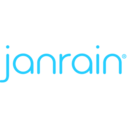Exploring the Opportunities in Programmatic Advertising

The global display advertising market alone, in fact, is expected to reach $80.25 billion by 2021 - growing at an incredible compound annual growth rate (CAGR) of more than 18 percent - according to 2016 report from Technavio. If you're serious about promoting a brand on the Web, programmatic advertising (whether for the search or display channel) is a frequent point of discussion among enterprises as the opportunity is simply immense and too difficult to ignore.
The Phenomenal Growth of Programmatic
Despite the very common fear that programmatic advertising drives low-quality impressions (more on how to overcome that specific challenge later), the approach and technique is being adopted at a phenomenal rate by digital advertisers today.According to Zenith's "Programmatic Marketing Forecasts" report (Nov. 2016), for example, programmatic advertising accounted for just 13 percent of display ad spend ($5 billion) in 2012 in the U.S., but grew to $39 billion in 2016 (at an average rate of 71 percent a year). Impressive growth by any measure, but Zenith also estimated that programmatic advertising would increase an additional 31 percent in 2017, making an exploration of the opportunity so vital to Web professionals' success. What's more, Zenith's report also suggested that an increasing proportion of channels (e.g., social, video) will be traded programmatically in the very near future, and that the approach will become the principal method of trading digital display in 2016 - accounting for 51 percent of expenditure (rising to an estimated 58 percent of expenditure this year).
What this all ultimately means is that if you're not taking steps toward actively participating in the programmatic landscape right now, it's time to get started.
Does Programmatic Drive Low-Quality Impressions?
Despite the rising interest in all that programmatic advertising opportunities can provide, the approach is still considered a source of lower-quality impressions by many, and that perception has been difficult to shake over the years.A May 2016 report from Integral Ad Science, for example, found that programmatic display and video ads garnered lower-quality ad impressions than ads bought and sold through a direct relationship with a publisher. The Integral Ad Science study measured the quality of ad impressions based on factors including viewability and ad fraud, revealing that direct-sold display ads achieve viewability rates that are nearly 10 percent higher than programmatic display ads.
Video ads sold programmatically, in comparison, perform far worse - with a 35.5 percent viewability rate in Q1 2016 compared to 59.3 percent viewability rate for publishers' direct ads.
There's no question that programmatic advertising is set to surge in the coming years thanks to increasing ease of use and unmatched scope, but while digital ad stakeholders will have to work hard to moderate the negative side effects that come with an increased number of automated ad placements, getting those programmatic campaigns operating efficiently should start now. The perception of programmatic ad quality is changing however (albeit slowly).
Programmatic advertising marketplace OpenX, for example, released results (Sept. 2016) from its second annual report on the perceptions of marketplace quality in programmatic advertising and the results are actually quite encouraging. In 2015, almost all marketing professionals (95 percent) surveyed held the belief that programmatic advertising offered good value for the investment. One year later, however, this figure fell to 86 percent. While likely a result of more solutions (and advertisers) entering the ecosystems, marketers' perception of risk has also decreased and this year (2017) less than half of all respondents (48 percent) believe programmatic advertising is high risk compared to other channels, a 17 percentage point decrease year-over-year.
OpenX suggests that factors including improved verification tools, experience and education are likely driving the increase in confidence. While programmatic advertising in the past has often been used to reach target audiences as cheaply as possible with little regard for the quality of the sites in which the ads appeared, it is now being used in conjunction with very robust data segments (more on that later) to target individuals in increasingly intelligent and creative ways, identifying those who are most likely to be receptive to advertisers' messages. What that ultimately means is that it's time to consider where your brand is investing its advertising dollars.
Reallocating Budget to Programmatic
Marketers and advertisers that double their investment in programmatic could achieve as much as a six percent increase in sales and a 22 percent increase in marketing return on investment (ROI) according to a study from Rubicon Project and TFQ Strategy released in Dec. 2016.The study explores the impact of data-enabled buying (e.g., programmatic) on brand sales and suggests that in order for advertisers to achieve optimal sales and marketing ROI, programmatic should comprise, on average, 10 percent of total media spend.
One of the more interesting findings from the study was that brands looking to reach younger consumers should allocate, on average, 30 percent of their total marketing spend to digital and programmatic, with half of that spend allocated to mobile specifically.
"This study of some of the largest brands in the world very clearly showcases that advertisers who are underinvested in programmatic will miss out on significant revenue opportunities," said Harry Patz, chief revenue officer at Rubicon Project. "By reallocating advertising budgets to double investment in programmatic, our data shows that brands will see a significant uptick in increased sales and marketing ROI, compared to those who do not. This is not about spending more, it's about spending smarter - having the right mix of programmatic and digital ad spending is key to a balanced portfolio in today's environment."
Many 'Net professionals, however, still aren't using programmatic and they are in some instances rightfully cautious about moving around budget. That might be due in great part to the complexity of the opportunity, so let's take a few digital steps back and start from the beginning in order to get a handle on what programmatic really means.
Start Understanding Programmatic
Programmatic is essentially the buying of advertising using software and algorithms. It gets complicated when all the various players (e.g., networks, platforms, agencies, publishers) are introduced into the virtual mix.For example, there are demand side platforms (where advertiser campaigns are created, managed and optimized - the equivalent to the AdWords UI), supply side platforms (the library of sell-able inventory made available by publishers and media owners) and ad exchanges - where the two essentially meet up, with advertisers picking what they want to buy and sellers making available their impressions.
There are also data management platforms (DMPs), solutions that help advertisers collect and analyze user behavior and cookie data so that audience segments can be established and targeted based on the advertiser's strategy or campaign goals. The process of buying and selling happens in milliseconds. Essentially, an auction happens every time a page loads, with the highest bid winning the right to show inventory in that location. That's called "real-time bidding" (RTB) and for many it's the core of programmatic and digital advertising in general. Despite RTB's popularity, there are many ways to execute a buy in programmatic, including the following.
+ Open RTB Exchanges
A collection of open ad exchanges, each of which provides ad inventory to the advertiser via a demand side platform (DSP) such as DoubleClick Bid Manager, Mediamath or The Trade Desk. Advertisers tend to bid on this inventory on a cost-per-thousand (CPM) basis and will often have bid-level control.
+ Private Marketplaces (PMPs) or Private Exchanges
Auctions that tend to contain unsold inventory that a publisher sets aside for select advertisers. To enter these auctions, advertisers must bid a minimum floor price (set by the publisher). Typically, the content is for premium, higher traffic areas of the site or app.
+ Guaranteed Direct
This is the programmatic version of the direct buy. Rather than dealing with the hassle of request for proposals (RFPs) and sales staff, advertisers can create deals directly with publishers via a demand side platform, allowing them to report and monitor the campaigns themselves. The usual format of these deals is a set amount of impressions for a set price.The way in which brands and advertisers reach their audience is changing, and programmatic is the primary driving force behind it. Instead of utilizing one brand message to a broad, not necessarily specific audience, brands can now tailor their messaging, at scale, to nurture customer relationships on a 1:1 basis and in real-time.
Programmatic technology essentially allows advertisers to take everything they know about their existing and potential customers (user data) and deliver a unique experience at each stage in the consumer journey.
Data Drives Programmatic Success
Big data presents big problems for everyone working in digital, but none more so than advertisers. The question most often have is how they can actually use and harness its power effectively. Consider the following.Analytics systems are used to track users' digital behavior. Users can then be segmented into various personas (leveraging an almost unlimited number of variables), which can then be used to target campaigns to a subset of users.
Perhaps an e-commerce store sells $100 flip flops, for example. Should a user visit the site, browse and discover the flip flops, but ultimately not purchase them, the previously acquired behavioral data can be used to target those in the specific user segment (or avoid them altogether) in the future. The retailer might find, for example, that users with a similar demographic profile look at the $100 flip flops but never purchase, so why show them an ad featuring those products? The website could, however, feature products that similar users did purchase or the products they were shown before making their purchase.
It's also reasonable to take this down to the channel level, understanding the source of traffic they were on when they viewed an ad that prompted a conversion. While success with programmatic (which essentially just accelerates getting the right ad in front of the right users at the right time) requires relevant and useful data, it also demands technology partners to put that data to use.
It's well documented that using digital behavior to improve programmatic advertising (or any advertising for that matter) does or can provide lift. Behavioral data makes it possible to use data to show more relevant ads and display those ads at the right time to the right audiences.
Advertisers recognize the opportunity in programmatic, are loaded up with data for these campaigns and are flush with budget to spend. What they will ultimately find when embarking on an effort of this nature is one of the most streamlined and useful software ecosystems ever developed.
The Future of Programmatic
For years, engaging in programmatic advertising required a great deal of sophistication but no longer. Today, it is both self-serve and smart as well as, in some instances, automated.In Jan. 2017, for example, AOL introduced new self-serve capabilities for its programmatic mobile supply-side platform, ONE by AOL: Mobile. The offering, which actually had its beta debut in 2016, is an expansion of AOL's managed service for app developers. The platform aims to make revenue management easier for developers because they can access multiple (hundreds) of premium demand sources at once. App developers often use several SDKs, ad networks and demand sources simultaneously, so this should help considerably.
In addition to the demand AOL makes available through its programmatic ad exchange (programmatic bidders and managed demand that exists only within AOL), there are hundreds of millions of dollars in AOL that can be directed to publishers that use the platform.
Developers using the self-service platform will also be able to block certain types of ads in order to protect audiences, and publishers can view all demand partners filling their inventory, with details on specific buyers and brands. That level of transparency is unique in digital advertising.
Say Yes to the Programmatic Opportunity
There are benefits, drawbacks and complexities of running programmatic advertising campaigns but today's top digital brands are taking advantage of the opportunity. The biggest failure in programmatic, however, is not getting started.








